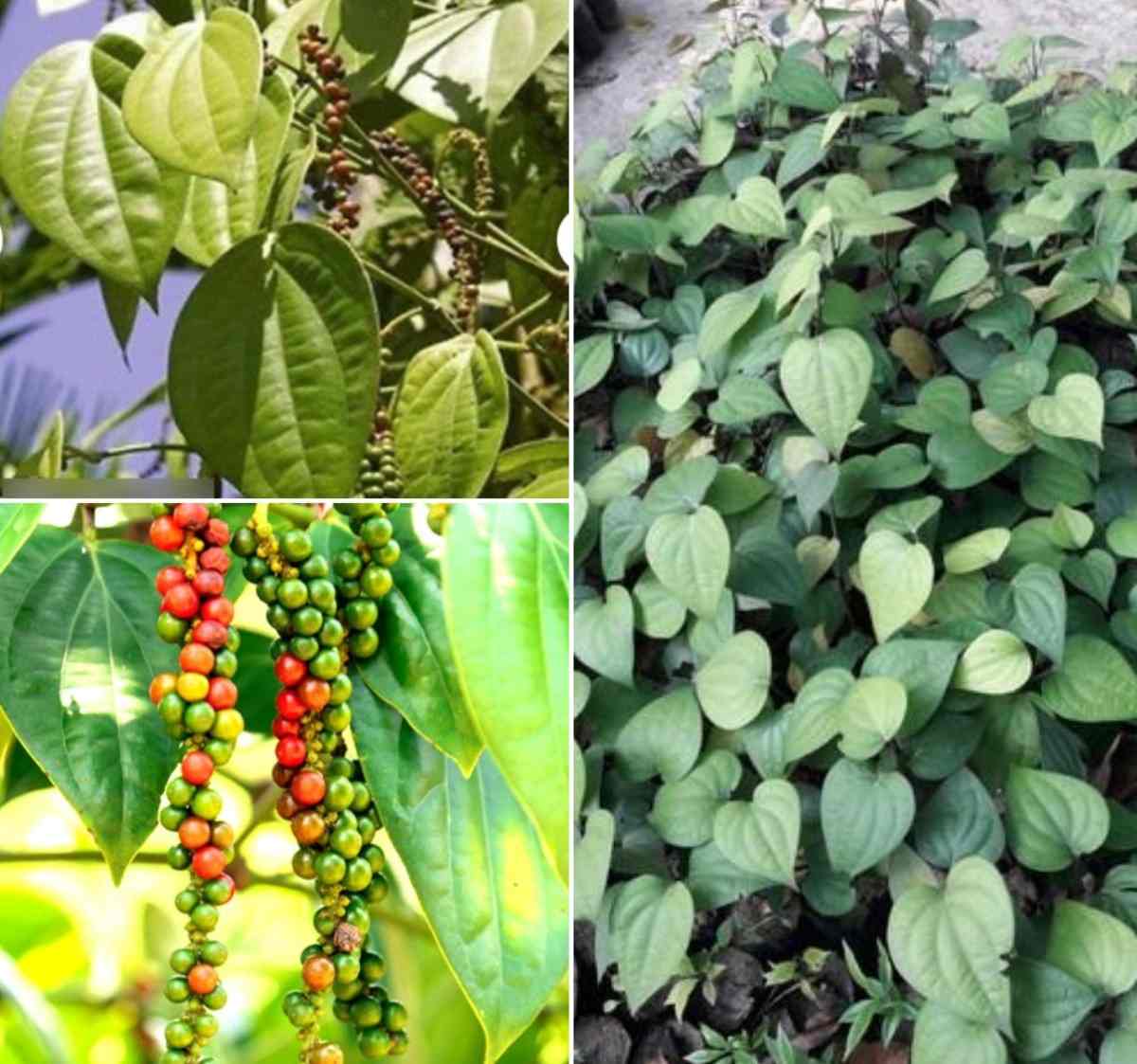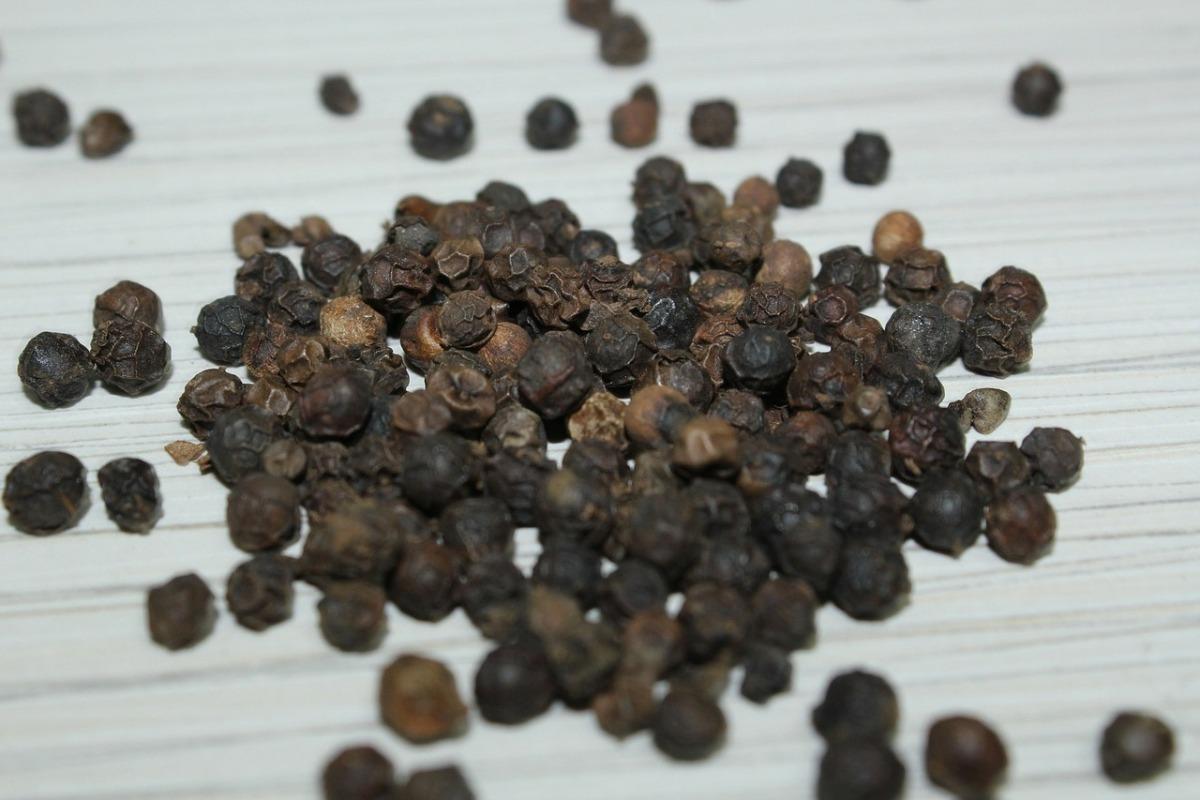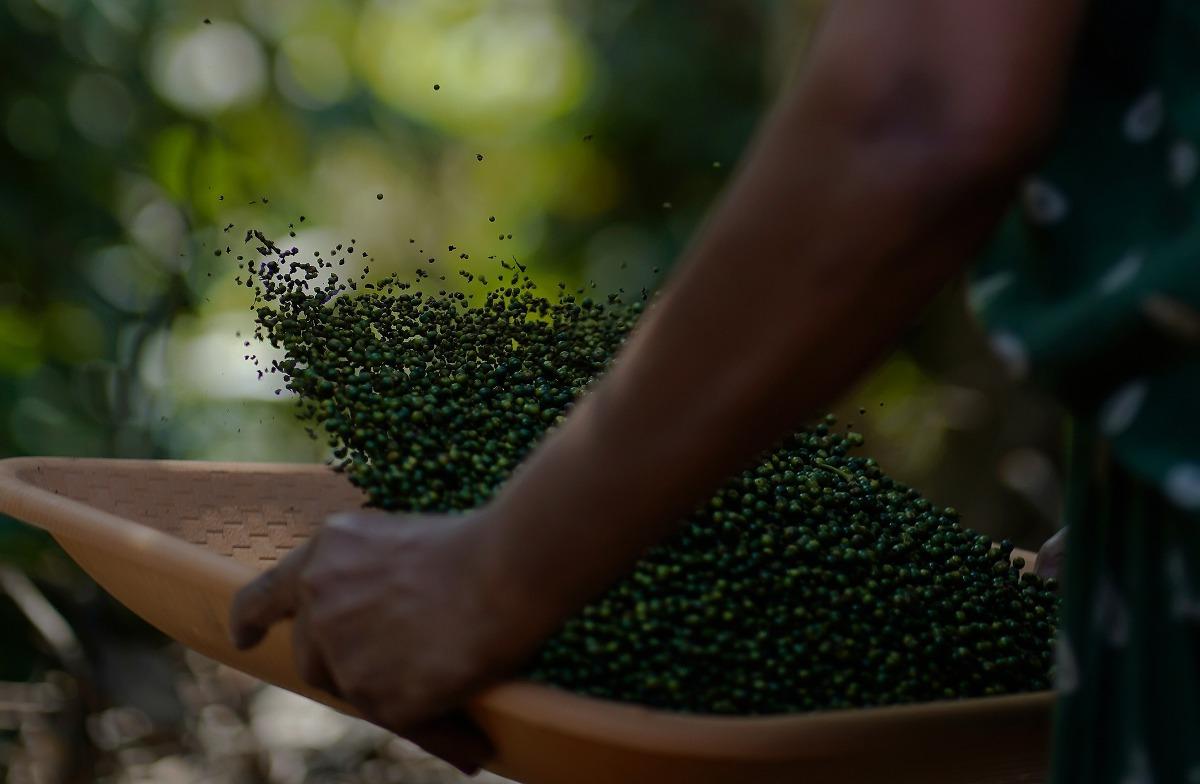Introduction to growing Black pepper from seed and cuttings
Black pepper (Piper nigrum) is a flowering vine in the family Piperaceae, growing for its fruit, known as a peppercorn. When fresh and fully mature, the fruit is 5 mm in diameter and dark red and contains a single seed, like all drupes. The same fruit is used to produce white pepper and green pepper. It is one of the most versatile spices used in several kinds of savory cooking. It is a flowering vine that is best known for its fragrant, spicy peppercorn berries. Black pepper is the dried fruit of the Black pepper plant and each fruit contains a single seed, and that seed will germinate if the fruit is planted in fertile soil that maintains the required temperature until the seed sprouts. In this article we also discuss below topics;
- How long does Black pepper tree take to grow
- Growing a Black pepper from cuttings
- Black pepper plant propagation
- Growing Black pepper from seed
- Black pepper tree growing tips
A step by step guide to growing Black pepper from seed and cuttings
Black pepper is grown in soil that is neither too dry nor susceptible to flooding, is moist, well-drained, and also rich in organic matter. The Black pepper plants propagated by cuttings about 40 to 50 centimeters long, tied up to neighboring trees or climbing frames at distances of about 2 meters apart, as the pepper plants climb rough bark more readily. Competing plants are cleared away, leaving sufficient trees to provide shade and permit free ventilation. The plant roots are covered in leaf mulch and manure, and the shoots are trimmed twice a year. On dry soils, the young plants need watering every other day during the dry season for the first three years. The plants bear fruit from the fourth or fifth year and typically continue to bear fruit for 7 years. The cuttings are generally cultivars, selected both for yield and quality of fruit.
Location for a growing Black pepper plant from cuttings and seed
While planting pepper plants always remember to select a location that remains humid and temperature mostly be maintained constantly around 24 to 30°C. However, the Black pepper plant can tolerate temperature between 10 to 40°C.
In case if you miss this: Growing Bayleaf Plant from Cuttings, Seed, Propagation.

Find an area with partial shade to plant Black pepper. Black pepper plant needs between 6 to 8 hours of indirect sunlight per day. Choose a place in the garden that receives mixed shade and sunlight throughout the day, or place your plant near a window that receives periodic sunlight. If you live in a cloudy climate, purchase a sunlamp for your pepper plant.
Plant Black pepper plant in well-draining soil
Black pepper plants do best in fertile and medium clayey soil that retains slight moisture. Good drainage is always the necessary need while growing Black pepper in pot or ground. Waterlogged soil can damage the pepper plant. Soil pH level can be anywhere between 5.5 and 7, add lime if the soil is too acidic and sulfur if alkaline.
Growing conditions for Black pepper
Look for dappled shade, a spot that receives daylong filtered sunlight is optimal as the pepper plant can be damaged if exposed to too much direct sunlight. If planting in a sunny area should use a shade cloth that filters the sunlight to at least 50%. If growing in a cool climate, then provide full sun. Be sure to give the pepper plant plenty of water to keep the soil slightly moist always, not allowing the soil to dry out between watering spells.
Black pepper loves extremely hot and humid climates where the temperature never falls below 16°C. It is a vine with beautiful heart-shaped leaves like betel leaf; it grows on support from hanging aerial roots and produces small spike-like white flowers in summer before setting fruits.
Soak Black pepper seeds for 24 hours before planting. Hard, dry pepper seeds will be less responsive to the soil’s nutrients. Fill a small bowl with water and let your pepper seeds soak for at least a day prior to planting.
Lukewarm or room temperature water is ideal for soaking your pepper seeds. The type of water doesn’t matter tap water is fine. If you prefer to plant cuttings in the garden, you do not need to let them soak beforehand. Pepper is a flowering, woody, perennial climbing vine that grows in the tropical forests of India, but it is a valuable crop in different parts of the world.
Balck pepper plant propagation
Pepper plants are propagated through seeds and cuttings. Pepper plants need high humidity and generous watering. And they do not tolerate excessive heat and dryness. The plant tolerates temperatures that are between 10 to 40°C.
This plant grows best in well-drained, loamy soils that are high in organic matter and rich in humus. The pepper plant requires partial shade in order to not turn yellow. The top portion of the plant receives more sunlight than the rest, but the rest of the plant is mutually shaded on down. This plant requires living or nonliving standards for support and successful growth.
Sowing Black pepper seeds can be done, but only fresh seeds are germinated, seeds are viable for a short period. To propagate pepper from seeds fill the container with a quality potting mix that contains a good amount of organic matter. Use finger to poke holes, each 1/2 inch deep and about 1 to 1.5 inches apart. Drop a seed in each hole, and then cover it with soil. Water the seeds often and maintain the soil moistly.
Mix compost and coarse sand to the garden soil before planting. Make a hole in the soil and plant the seedlings or plants at the same depth. Pack the soil firmly around the base of the pepper plant to hold it in the right position and water thoroughly. If planting in pots, then use a pot that is large enough as Black pepper plants have an extensive root system.
Growing Black pepper from seeds
You should not miss the Fenugreek Seed Germination, Time, Process.

Always use fresh seeds for sowing as these seeds are viable for a short period of time and then follow the below steps;
- Soak Black pepper seeds in lukewarm water for 24 hours prior to planting.
- Black pepper requires rich soil that drains easily. Prepare the potting mix with well rotten cow dung or compost and soil in a 3:1 ratio.
- Fill the container with potting mix and sow seeds lightly, only about ¼ inch below the surface of the soil and about 3 inches apart. Spread a thin layer of mulch, straw, and grass over the mix. Water deeply until the soil feels moist.
- Keep the soil moist and also warm. The soil temperature should be at least 21°C for optimum germination rate.
- Seeds will germinate anything in between 30 to 40 days, depending upon the seed quality and growing condition.
- When seed germination occurs, remove most of the mulch, leaving only a thin layer around the seedlings and move them to indirect sunlight.
- Then, provide overhead shade to protect seedlings from the bright sun. When the seedlings are 5 to 6 inches tall, transplant them to individual pots or location.
Fertilizer requirement for growing Black pepper plants
When growing plants on the ground, apply 10 kilograms of well-rotted manure or compost per year on a mature plant so that the soil remains rich in nutrients. In pots, side-dress the pepper plants with compost.
Fertilize it with balanced 10-10-10 or 20-20-20 slow-release fertilizer, by according to the product’s instruction at the beginning of the growing season. The application of Epsom salt is beneficial.
Growing Black pepper from cuttings
Selection of cuttings
Black pepper vines produce three types of the shoot;
- Primary climbing shoots with long internodes having adventitious roots at nodes which cling to the supports or standards,
- Runner shoots which originate from the base of the vine and creep on the ground, have long internodes which strike plant roots at each node,
- Fruit-bearing lateral shoots.
Cuttings are raised from runner shoots, though terminal shoots can also be used. Cuttings from lateral branches increase a bushy habit. Rooted lateral branches are mainly used for raising bush pepper. Though seeds (berries) are fully viable, they are not used for raising plantations as seedlings will not be genetically uniform.
Preparation of cuttings
Select runner shoots formed at the base of the mother plant and keep them coiled and raised on a stake to prevent soil contamination and from striking roots in the soil. And separate them from the vines during February-March. The middle one-third portion of the runner shoot is chosen for planting. Tender and too woody shoots are to be avoided. The selected runner shoots are cut into 2 to 3 node cuttings. Leaves, if any are to be clipped off leaving a small portion of the petiole on the plant stem. Then, cuttings are to be treated with Pseudomonas fluorescent culture by dipping cut ends of the cuttings in a slurry of P. fluorescent culture about 250 g in 750 ml of water for 20 minutes. Treated cuttings are planted in polythene bags at the rate of 2 to 3 cuttings /bag
Planting of cuttings in poly bags
Black pepper is propagated by cuttings raised mainly from the runner shoots. Cuttings from the lateral branches are seldom used since in addition to the reduction in the number of fruiting shoots, the vines raised from them are short-lived and bushy in habit. Though, rooted lateral branches are useful in raising pepper in pots.
Runner shoots from high yielding and healthy vines are kept coiled on wooden pegs fixed at the base of the plant vine to prevent the shoots from coming in contact with soil and striking roots. The runner shoots are separated from the vine in February-March and after trimming the plant leaves, cuttings of 2 to 3 nodes each are planted either in nursery beds or polythene bags filled with fertile soil. Cuttings from the middle about 1/3 of the shoots are desirable as they are high yielding. The adequate shade is provided and irrigated frequently. The cuttings will strike roots and ready for planting in May-June.
Black pepper plant care
The most common disease that infects the Black pepper plant is root rot, which happens due to overwatering. In pests, plants can be attacked by aphids, slugs, and scale insects. Also, beware of spider mites during indoor planting.
Black pepper harvesting
The Black, white or green peppers are harvested from a single plant. The pepper color depends on the different degrees of maturation and how the Black pepper is processed. Pepper is harvested before maturity and dried in the hot sun. After drying pepper becomes wrinkled and Black.
You may also like the Growing Ginger from Roots in Pots.

Wait for 2 to 3 years to harvest pepper plants. Black pepper does not produce fruit until several years after planting. When the plant is fully-grown, it will grow flowers in the spring and summer and form peppercorn berry clusters. Buy an adult pepper plant if you want to harvest pepper plants sooner.
Harvest the peppercorn berries when they turn a red color. When peppercorns are ready to pick, they will turn color from green to light red. Pluck the berries from the pepper plant one at a time, working carefully to avoid plucking unripe berries. Bring a container with you as you harvest pepper plant, to put the berries inside. Not all types of peppercorn berries will mature at the same time. You may need to harvest plants several times in a single season.
Dry peppercorns in the sun for 7 to 9 days. Spread peppercorns out on a flat surface, like a baking pan, where they can receive direct sunlight. Then, grind the peppercorns to make Black pepper. Use a mortar and pestle or pepper grinder to make a delicious, fresh spice from the garden. If you are not a fan of ground pepper, you can use whole peppercorns to flavor soups or sauces or crushed peppercorn as a spice on meats.
Avoid overwatering Black pepper plant to prevent wilting
Quick and slow wilt is the common pepper plant diseases, and they can progress to root rot when untreated. Dip your finger into the soil whenever you water plant. If the soil feels drenched or water pools into the hole your finger leaves, do not water your pepper plant.
Watch for signs of pepper plant overwatering, like yellow or brown leaves, wilted vines, moldy roots, or blisters or lesions on the plant.
Black Spots on the Peppercorn Plant Leaf
Black spots on the backsides of the pepper plant leaves are totally normal. They are small crystalline balls that contain sugars known as exudates. Over time, these balls turn Black color. They are sometimes mistaken for insects. Do not try to remove them and they are part of the plant’s normal physiology and do not harm the plant.
Commonly asked questions about growing Black pepper plant from cuttings and seed
How long does it take for Black pepper to grow?
Black pepper does not produce fruit until several years after planting. When the plant is fully-grown, it will grow flowers in the spring and summer and form peppercorn berry clusters. Wait for 2 to 3 years to harvest pepper plants.
Can you grow a Black pepper plant from a Black pepper seed at home?
You can try to grow Black pepper plants from organic seeds that are bought from a grocery store. Most of the seeds that wind their way through the manufacturing procedure to arrive at stores have been processed to the point where they will more than likely no longer be able to sprout.
Can I grow Black pepper at home?
Black pepper is native to tropical climates and thrives when the temperature is between 24 to 29°C. If temperatures fall to 16°C, the plant begins to die. Black pepper can be grown indoors or inside a greenhouse if you live in a colder climate.
Can Black pepper be grown in pots?
Black pepper can be grown in clay, red loams, and sandy loams. This plant loves humidity, the more the better. If you’re growing Black pepper in pots place them on a saucer filled with water, this will increase the humidity level.
Conclusion of growing black pepper from cuttings and seeds
It is very easy to grow these plants on your own. The above said information may be applied to growing black pepper in containers/pots, growing black pepper on terrace, how to grow black pepper in backyard and even you can use this information for growing black pepper in polyhouse/greenhouse. You may also like the Medicinal Plants Cultivation, Farming Guide, Training.
A very informative note.I have planted more than 20 plants over the past 10 years ..this way only..The problem is support tree..I made arecaunut palm trees as supports but find arecaunut production is decreasing ..Now the best support is installing 4 inch PVC pipes with coir coiled in between..Good result..on watering a word of caution , if you start watering a pepper creeper you have to do continue till rain arrives..if not watered continuosly the chances the creeper drys away..